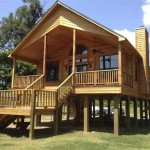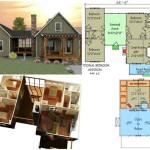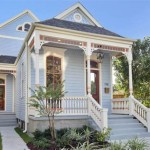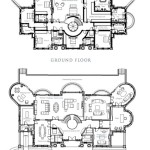Tiny House Plans: Design Your Dream Home On A Smaller Scale
The allure of tiny house living has captured the imagination of many, offering a compelling alternative to the traditional, often sprawling, suburban home. Tiny houses, typically ranging from 100 to 400 square feet, provide a minimalist lifestyle focused on functionality, affordability, and sustainability. Designing a tiny house involves careful planning and creative solutions to maximize space while accommodating essential living needs. This article explores the key elements of tiny house plans, offering insights into design considerations, layout options, and the advantages of embracing a smaller footprint.
Essential Components of Tiny House Plans
Creating a functional and comfortable tiny house requires meticulous attention to detail and efficient utilization of space. Tiny house plans typically include the following essential components:
- Floor Plan: The foundation of any tiny house plan is the floor plan, which outlines the layout of the various zones, such as the living area, kitchen, bathroom, and sleeping loft. Efficiently organizing these zones while maintaining a sense of flow and functionality is crucial.
- Exterior Design: The exterior design of the tiny house should complement the surrounding environment and reflect the owner's personal style. Considerations include siding, roofing, windows, and any exterior features like porches or decks.
- Interior Design: The interior design of a tiny house must balance aesthetics with functionality. Choosing the right materials, colors, and furniture can create a welcoming and inviting atmosphere within a limited space.
- Utilities: Integrating essential utilities, such as plumbing, electrical, heating, and ventilation, is vital for a comfortable living experience in a tiny house.
- Storage: Maximizing storage space is critical in tiny house living. This can involve creative solutions, such as built-in shelves, drawers, and under-bed storage.
Layout Options for Tiny House Plans
The layout of a tiny house can greatly impact its functionality and livability. Several popular layout options offer distinct advantages:
- Open Concept: An open concept layout combines the living, kitchen, and dining areas into one large space, enhancing a sense of openness and maximizing natural light. This layout can be particularly effective in smaller tiny houses.
- Loft Design: A loft design typically features a sleeping area elevated above the main living space, maximizing floor space for other activities. This layout is suitable for tiny houses with taller ceilings.
- Murphy Bed: A Murphy bed, which folds away into a wall when not in use, is a space-saving solution for smaller tiny houses. This design maximizes floor space during the day while providing a comfortable sleeping area at night.
- Multi-Functional Furniture: Utilizing multi-functional furniture, such as a sofa bed or a dining table that converts into a desk, helps maximize space and serves multiple purposes within a tiny home.
Advantages of Tiny House Living
Embracing a tiny house lifestyle presents numerous advantages beyond simply shrinking your footprint:
- Affordability: Tiny houses are often significantly more affordable than traditional homes, reducing the cost of construction, mortgage payments, and property taxes.
- Sustainability: Tiny houses require less energy and resources to heat, cool, and maintain, promoting sustainability and minimizing environmental impact.
- Mobility: Many tiny houses are designed to be easily transportable, offering the freedom to relocate and explore new locations.
- Minimalism: Tiny house living encourages a minimalist lifestyle, promoting a focus on essentials and reducing clutter.
- Community: The tiny house movement has fostered a strong sense of community among enthusiasts, creating opportunities for sharing knowledge, resources, and support.
Designing and building a tiny house is a rewarding journey that demands careful planning and creative solutions. By thoughtfully considering the essential components, layout options, and advantages of tiny house living, individuals can create a personalized and functional home that matches their lifestyle and aspirations.

27 Adorable Free Tiny House Floor Plans Craft

27 Adorable Free Tiny House Floor Plans Craft

27 Adorable Free Tiny House Floor Plans Craft

2 Bedroom Tiny House Design Finance Build United Homes

27 Adorable Free Tiny House Floor Plans Craft
How To Draw A Tiny House Floor Plan Tiffany The Home

Small House Plans Simple Tiny Floor Monster

Small House Plan Examples

27 Adorable Free Tiny House Floor Plans Craft

27 Adorable Free Tiny House Floor Plans Craft
Related Posts








